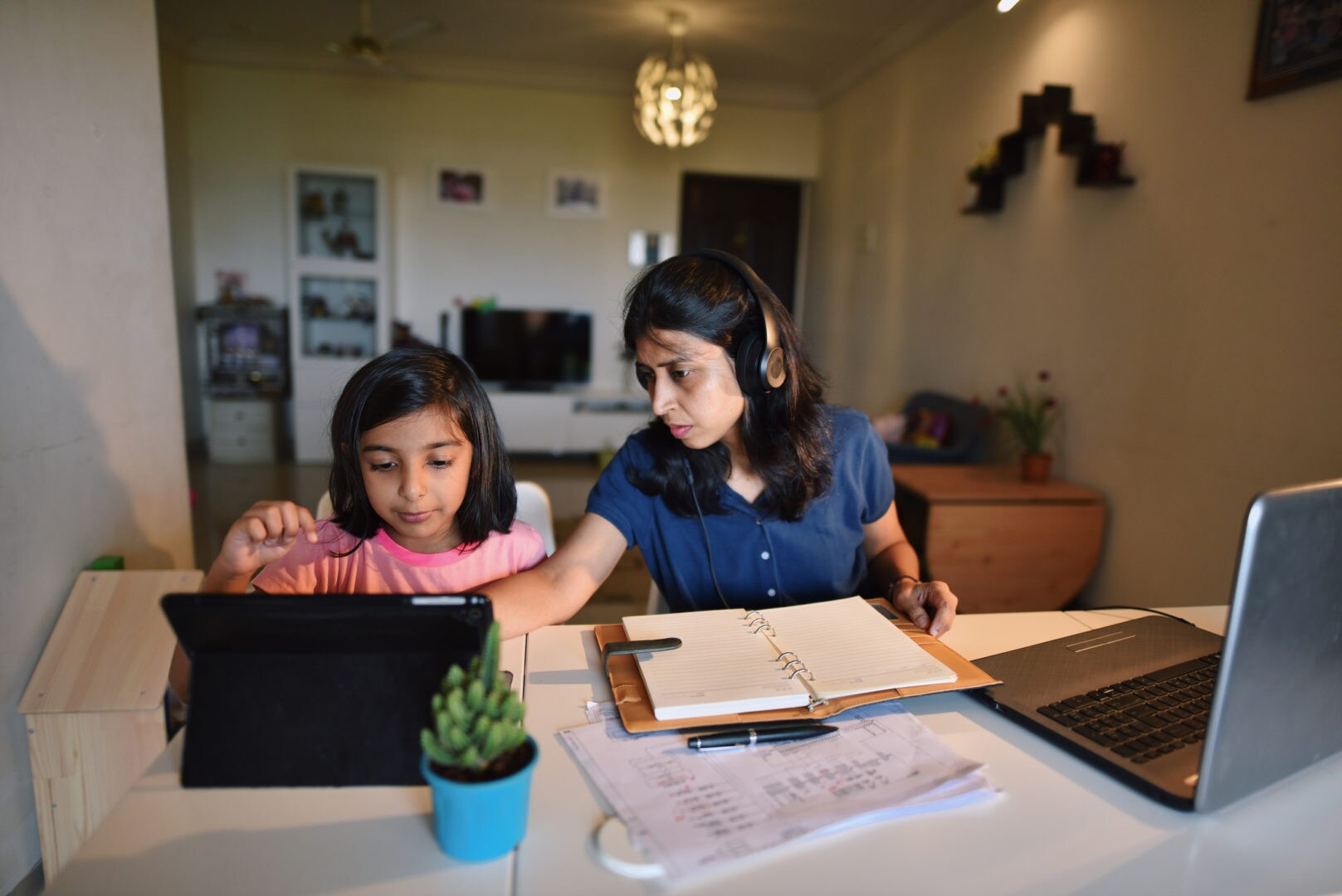School districts offering distance learning options for the fall are beginning to send out their new schedules, and the plans aren’t necessarily easing anxieties for busy moms and dads. Working parents have started posting these demanding new school schedules on Twitter, and it’s sparked a serious conversation about the hardships many families and teachers are facing as they head back to class.
How parents feel about new distance learning schedules
Writer and author Aubrey Hirsch went viral on Twitter after she shared her kindergartener’s distance learning schedule in a series of tweets. “I also got one for my second grader, and guess what? The ‘live instruction’ happens at the same time for each kid,” she writes. “I only have one computer, which I also (in theory) use for work. Oh, and attendance is mandatory at daily group meetings. Guess I should have thought of this when I decided to have two kids!”
She’s not the only parent venting about the new demands of school. In response to her tweet, one mom shared a complicated block schedule her sixth grader will have to follow this year.
In a separate tweet, another parent shared her first grader’s schedule, which has kids participating in distance learning activities from 8:45 a.m. to 3:30 p.m. “I am in full support of distance learning this school year, and I think my son’s class schedule looks reasonable and realistic,” she writes. “Also, I don’t know how I’m going to make this work for a first grader and keep my job and continue to write things.”
The problems 2020-2021 online learning plans present
Many school schedules posted on social media show a mix of group instruction time, solo time for work on assignments, breaks for play or meals and free time. However, as these parents have noted, even a seemingly flexible schedule with breaks can feel overwhelming and impossible when families have more than one child, lack access to required electronic devices and are trying to work from home while supervising remote learning time for their kids.
Some school districts have the resources and budget to offer electronic devices to students, but only 24% of teachers say their students have access to a computer or tablet to use for schoolwork when they need it, according to a May survey conducted by Educators for Excellence. No matter how hard they may try, teachers and administrators also can’t make considerations for every parent’s work schedule, living situation or number of children.
Why teachers are equally stressed
“As an educator of little ones, I agree this is untenable,” one teacher writes in response to Hirsch’s tweet. “The unfortunate thing in planning for distance learning is that every family wants and needs different things, and every kid can handle different things. We lose no matter what.”
“We were told to create a schedule for every scenario,” another teacher explains. “We know it’s all horrible. Please remember: many teachers also have school age children, care for elderly parents [or] are single parents.”
When schools initially closed during the spring, parents and teachers alike were unexpectedly thrust into the chaos of managing class Zoom calls and online assignments in addition to the demands of their daily lives. Now, teachers have presumably had more time to prepare for schooling during the pandemic, but it still seems there isn’t a good solution to the problem of how to engage kids while giving their parents space to work and not overburdening educators.
The root of the problem and where we go from here
Some of the problems schools and parents are facing could be the result of a lack of leadership. Secretary of Education Betsy DeVos is still insisting on in-person schooling, rather than focusing efforts on ways to make remote learning more equitable and accessible, and Congress has yet to pass additional COVID-19 relief measures that could provide families and employers more financial support and flexibility.
The distance learning schedules parents are sharing may be imperfect, but they represent educators’ best efforts to create a workable online learning routine in the midst of unprecedented difficulties. It’s hard to predict what will happen as schools open across the country and kids settle into brand new learning routines. One thing that’s clear is that the upcoming school year won’t be easy for anyone, regardless of scheduling, and parents and teachers will have to support one another to get through it.




